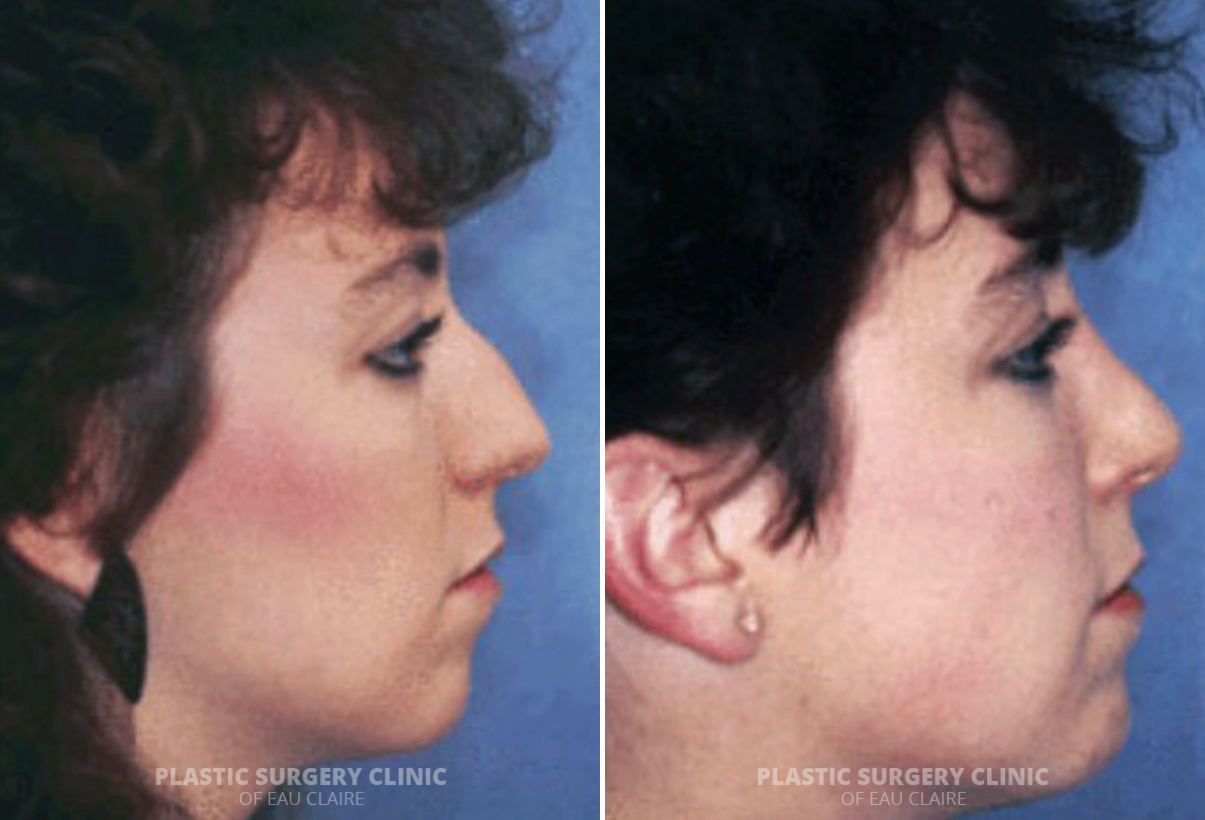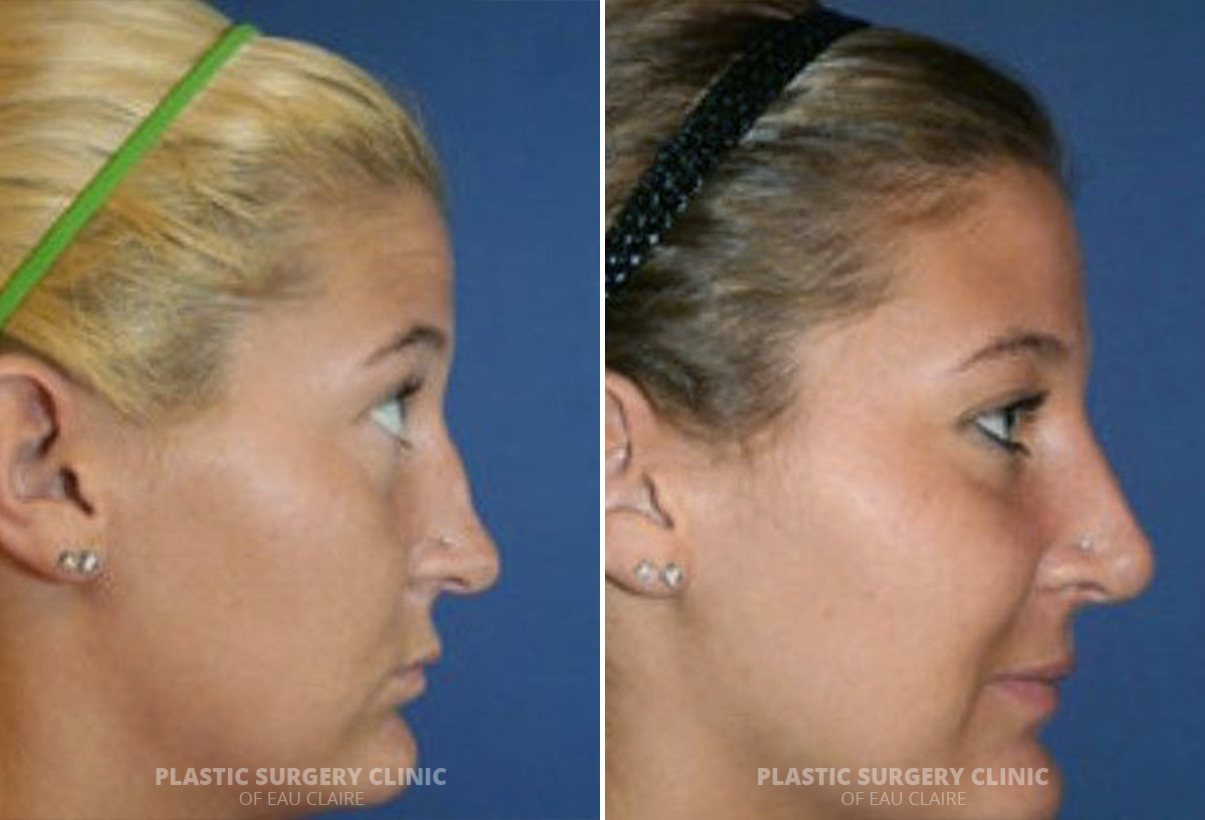Wondering how your glasses will fit into your rhinoplasty recovery? If you rely on prescription lenses, the thought of going without them after surgery can be a little nerve-wracking. Your glasses aren’t just a part of your daily routine—they’re essential to how you function, work, and get around, making their absence feel like a major inconvenience.
Thankfully, you won’t have to sacrifice your vision completely, but you will need to make some adjustments. With a few smart strategies, you can protect your healing nose while still seeing clearly throughout your recovery.

Can You Wear Glasses After Nose Surgery?
The short answer is—yes, but not right away, and not in the usual way. After rhinoplasty, your nasal bones and cartilage need time to stabilize, and placing the weight of eyeglass frames on your nose too soon can jeopardize healing and alter your results. However, there are effective workarounds that allow you to maintain a clear vision without putting pressure on the healing nasal structure. Your surgeon will recommend the safest method for your situation.
How Long After Rhinoplasty Can You Wear Glasses?
Most patients need to wait at least 4 to 6 weeks before wearing regular glasses that rest on the nose. In some cases, this restriction may last even longer, depending on how your nose is healing and the type of rhinoplasty performed. The pressure from glasses during this sensitive time can shift cartilage or affect final results, so patience is essential.
To help you navigate this, let’s break down the recovery timeline into two main phases—initial and long-term—so you know what to expect and how to protect your surgical results.
First 2–6 Weeks: Initial Recovery
During the first several weeks after a rhinoplasty procedure, your nose is especially vulnerable to pressure. The bones, cartilage, and soft tissues are still setting into place, and even light contact from glasses can cause indentations or unwanted shifting. For this reason, you’ll need to avoid wearing glasses directly on your nose. Rhinoplasty surgeons often recommend using tape, a foam pad, or forehead suspension devices to keep frames elevated. This phase is all about protecting your new nose while healing begins.
3–6 Months: Long-Term Recovery
Between months three and six, most rhinoplasty patients can gradually return to wearing regular glasses, provided their surgeon gives the go-ahead. By this stage, the nasal structure has typically stabilized enough to support light pressure without compromising results. However, it’s still wise to avoid overly heavy frames and continue monitoring for any signs of irritation or discomfort. Every nose heals at its own pace, so even during long-term recovery, individualized guidance from your surgeon is essential.
Are You Ready For A Consultation?
Join our satisfied clients who’ve experienced safe, effective treatments
How to Wear Glasses After Rhinoplasty Surgery
If you need to wear glasses during your recovery, you’ll have to get a bit creative. There are several practical ways to wear your frames without putting pressure on your healing nose. From choosing the right style of glasses to using support devices, these adjustments can make a big difference in your comfort and results. Below, we’ll explore a few solutions to help you see clearly without compromising your rhinoplasty outcome.
Get the Right Glasses
Choosing the right pair of glasses is essential during rhinoplasty recovery. Opt for lightweight frames made from materials like titanium or flexible plastic to reduce pressure on the nose. Adjustable nose pads offer a customizable fit that can accommodate your healing anatomy. A wider bridge size also helps distribute weight more evenly. For added comfort, consider frameless, rimless, or bridgeless glasses, which are especially gentle. The right glasses protect your nose while keeping your vision clear and recovery on track.
Forehead Eyeglass Holders
Forehead eyeglass holders are a popular solution during the early recovery period. These devices suspend your glasses from your forehead using an adhesive pad or lightweight headband, keeping all pressure off the healing nasal bridge. They’re easy to use, adjustable, and compatible with most frame styles. Not only do they protect your surgical results, but they also allow you to wear your prescription lenses consistently. Ask your surgeon if this method is suitable for your specific recovery plan.
Proper Adjustment of Glasses
Ensuring your glasses are properly adjusted can make a big difference in comfort and healing after rhinoplasty. The bridge should rest gently without pinching, and the arms should be level and not press into your skin. Adjust the nose pads so they sit lightly on the nose without creating pressure points. If needed, visit an optician for a professional fit. Regular adjustments and check-ups will help maintain comfort and ensure your frames stay supportive, not harmful, during recovery.
Take Regular Breaks
Even with properly adjusted or supported glasses, it’s a good idea to give your nose frequent breaks. Taking your glasses off periodically helps relieve any low-grade pressure that might build up during wear. Try setting reminders throughout the day to remove your glasses for short intervals, especially if you’re reading or working at a computer. These small pauses can reduce skin irritation and protect the healing nasal structure, adding an extra layer of caution to your recovery routine.
Other Eyewear Options Aside From Regular Glasses
If wearing traditional glasses isn’t ideal for your recovery phase, don’t worry—there are other effective ways to maintain clear vision without putting pressure on your healing nose. Whether it’s temporary alternatives like contact lenses or more permanent solutions like LASIK, these options can offer greater flexibility during recovery. Below are several choices that may work better for your specific needs and timeline.
Contact Lenses Instead of Glasses
If you’re already comfortable wearing contact lenses, they can be an ideal solution during rhinoplasty recovery. Contacts eliminate all pressure on the nose and offer clear vision without any physical interference with your surgical site. Even if you’re not a regular user, temporary daily lenses can be a great short-term alternative. Be sure to consult your eye doctor to ensure proper fit and hygiene, especially during the first few weeks when your body is also healing from surgery.
Post-surgical Glasses
Post-surgical glasses are specially designed to accommodate healing after nasal procedures like rhinoplasty. These frames often come with soft bridge supports or can be modified with medical-grade foam to prevent pressure on the nose. Some models even include forehead suspension options built in. These glasses can be a temporary solution while your nose heals, and are a good choice if you need vision correction but cannot wear contacts. Ask your surgeon if these are suitable for your recovery.
Consider LASIK Surgery Before Your Nose Job
If you’re a good candidate, LASIK surgery can be a smart pre-rhinoplasty option for long-term vision correction. By reducing or eliminating your dependence on glasses or contact lenses, LASIK simplifies your post-operative recovery. Without the need for eyewear resting on your healing nose, you’ll reduce the risk of pressure-related complications and improve overall comfort. Be sure to schedule LASIK well before your nose surgery to allow proper healing between procedures. Always discuss timing with both your eye surgeon and plastic surgeon.
Primary Rhinoplasty Before and After Photos


* Each patient is unique and individual results may vary.
Tips to Ensure The Best Rhinoplasty Results
Achieving great rhinoplasty results depends not only on the surgery itself but also on how well you follow your recovery plan. Small decisions—like how you wear your glasses—can have a big impact on healing and long-term appearance. These tips will help support your recovery and optimize your final outcome:
- Avoid resting anything on your nose during the early healing phase.
- Sleep with your head elevated to reduce swelling.
- Stay hydrated and eat nutrient-rich foods to support tissue repair.
- Limit physical activity to prevent accidental bumps or strains.
- Use alternatives to regular glasses, such as contact lenses or forehead supports.
- Follow your surgeon’s post-operative instructions carefully.
Choosing the Right Plastic Surgeon
Rhinoplasty is one of the most delicate and technically demanding plastic surgery procedures, and your choice of surgeon makes all the difference. An experienced plastic surgeon will guide you through a safe recovery, preserving the structure and appearance of your nose while helping you avoid complications like pressure-related changes from glasses.
Dr. Ember Ewings at the Plastic Surgery Clinic of Eau Claire is board-certified by the American Board of Plastic Surgery and has extensive experience performing successful rhinoplasties. With advanced training in both the U.S. and Europe, she combines medical precision with an artistic eye to deliver beautifully natural results. Call us today at 715-833-2116 or visit our contact page to schedule your consultation.


